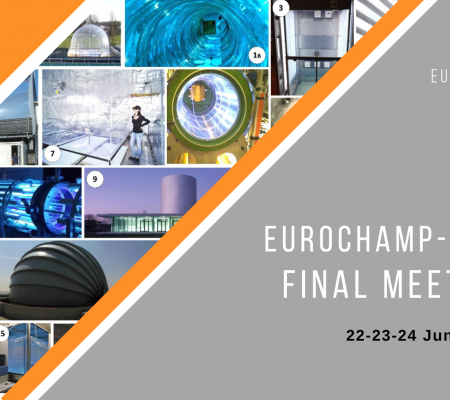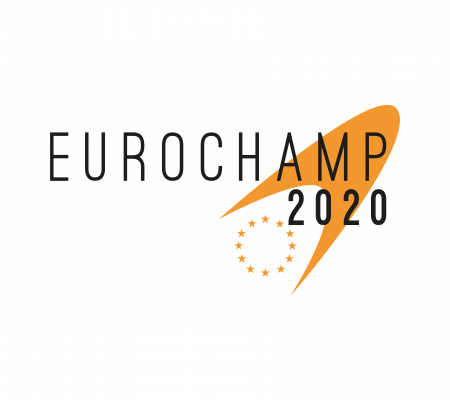| General information | |
| Access mode | Physical access |
| Infrastructure name and acronym | Outdoor Atmospheric Simulation Chamber of Orleans (HELIOS) |
| Photos |
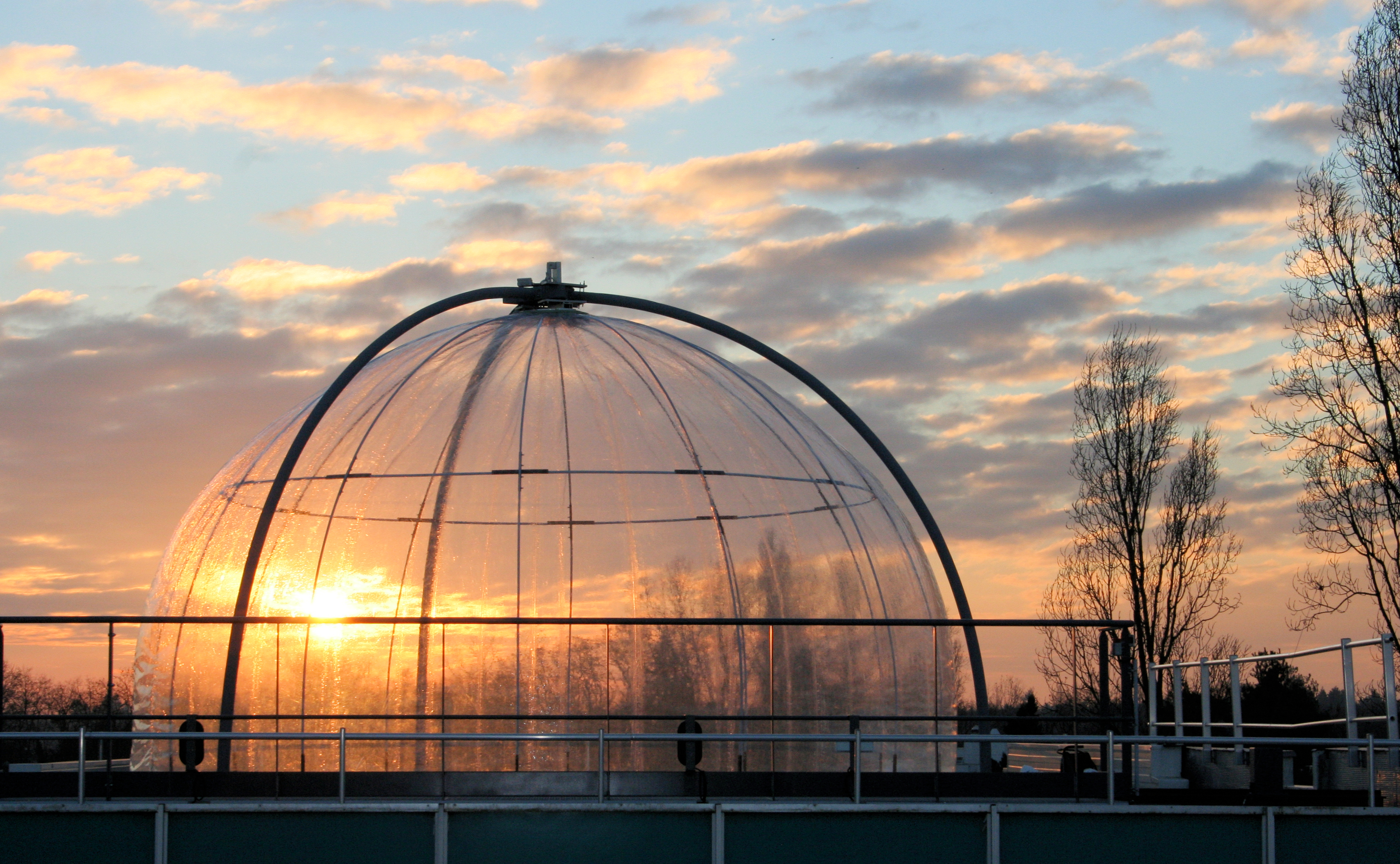 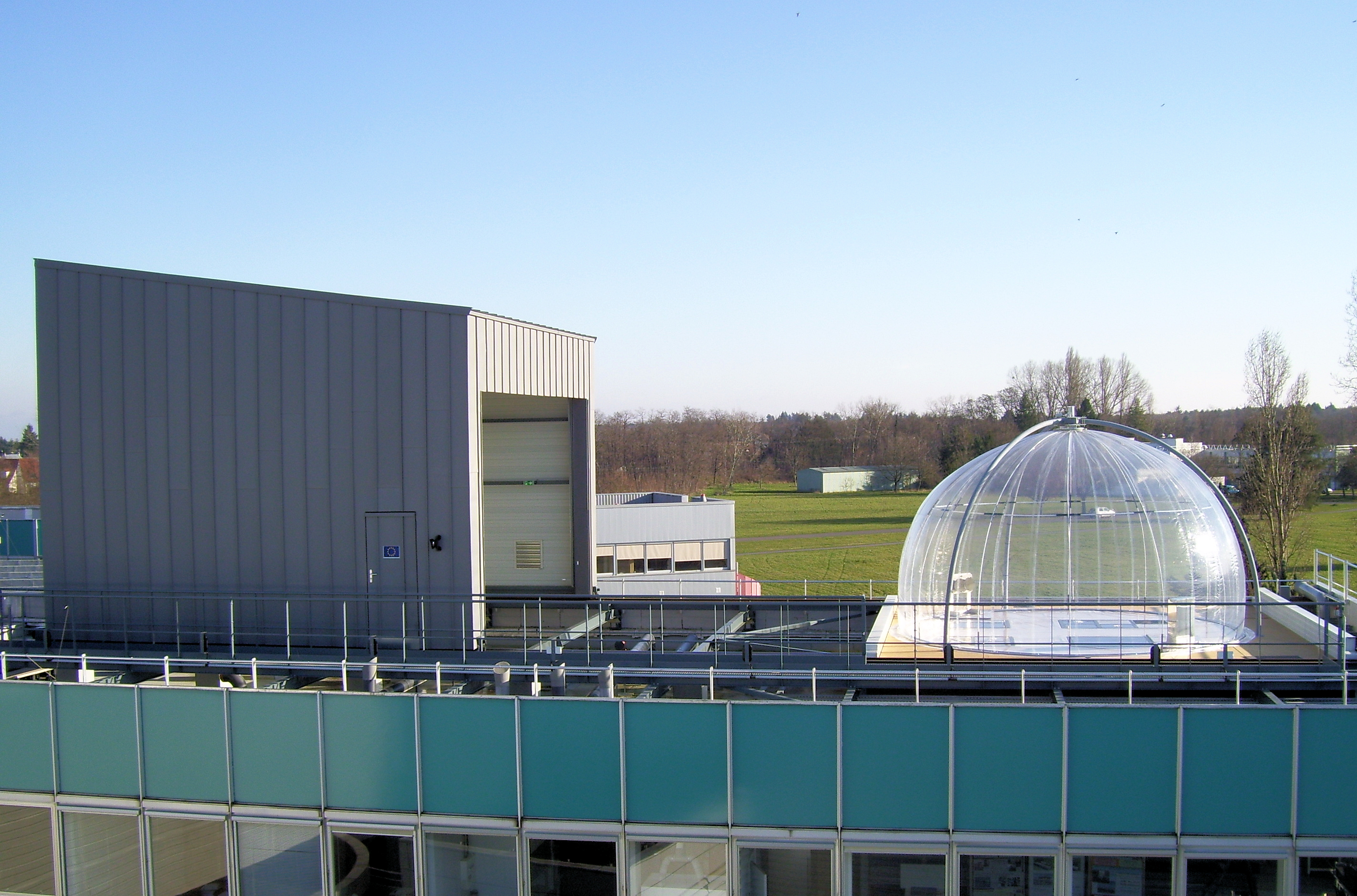 |
| Location | Orléans, France 47°50’18.39N; 1°56’40.03E |
| Website | www.helios-cnrs.org |
| Legal name of organisation operating the infrastructure | Centre National de la Recherche Scientifique - Institut de Combustion Aérothermique Réactivité et Environnement (CNRS-ICARE) |
| Description of the infrastructure | |
| Brief general description of the infrastructure to which access is offered |
HELIOS is a large hemispherical outdoor simulation chamber (volume of 90 m³) positioned on the top of the ICARE-CNRS building at Orléans (47°50’18.39N; 1°56’40.03E). The chamber is made of FEP film (250 μm thick) ensuring more than 90 % solar light transmission. The chamber is protected against severe meteorological conditions by a mobile protective housing which contains a series of Xenon lamps enabling experiments to be conducted also using artificial light. This special design makes HELIOS a unique platform in Europe where experiments can be made using both types of irradiation. HELIOS is dedicated mainly to the investigation of gas-phase processes and radical chemistry under different conditions (sunlight, artificial light and dark). It is equipped with a wide range of state-of-the-art instruments for physical and chemical characterization of trace gases and aerosols. The available range of complementary and highly sensitive instruments allows the investigation of radical chemistry, gas-phase processes and aerosol formation under realistic conditions. |
| Services currently offered by the infrastructure and its research environment |
Investigations of chemical gas-phase processes and radical budgets by determining kinetic parameters, identifying the secondary products in the gas and particles and their yields. The atmospheric lifetimes of the investigated compounds and their degradation mechanisms can be derived. |
| Modalities of access and support offered under EUROCHAMP-2020 | |
| Typical duration of work |
Two to four weeks including days for the preparation of the experiments and the protocols and data analysis. |
| Community/user type served |
Academics, government agencies and industries. |
| Scientific and technical support offered | Training for the use of the infrastructure and the data treatment is offered. Depending on the degree of expertise of the guest, a data analysis of level 1 can be offered to users as well as the definition and design of the experiments to be conducted. |
| Logistic and administrative support offered | Administrative support for ordering chemicals and consumables, logistic support for the management of chemicals, including gases (ordering, conservation, provision), as well as support during the stay |
| Person in charge of access provision at the infrastructure | Wahid Mellouki, CNRS, mellouki@cnrs-orleans.fr Véronique Daële, CNRS, veronique.daele@cnrs-orleans.fr |
| Extended technical information | |
| Physical description | HELIOS is a 90 m3 half-hemispheric chamber with FEP film ensuring more than 90 % solar light transmission. Diameter : 6 m Height 3m Projected horizontal surface area 55 m² Temperature range: 280 - 310 K Pressure range: ~1013 mbar RH range: 0-90% S/V ratio: 1.2 m-1 JNO2 and other J: JNO2 0-8×10-3 s-1 |
| Mechanical description |
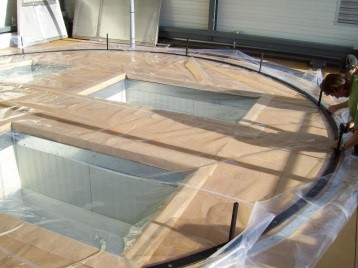 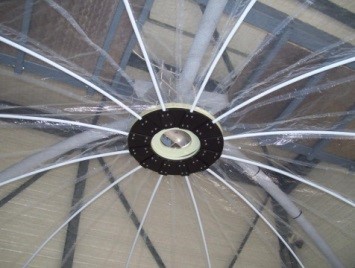 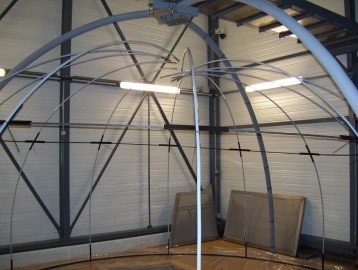 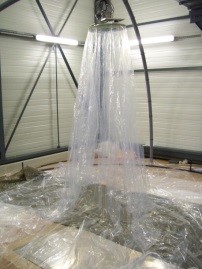 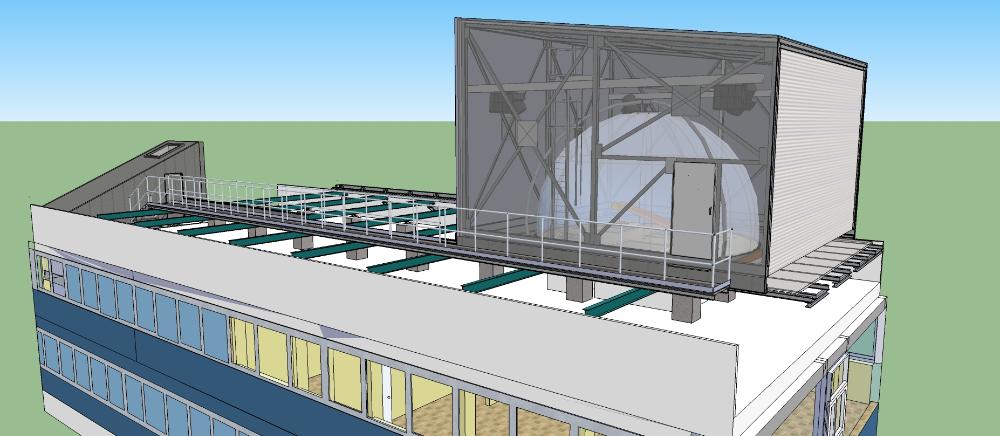 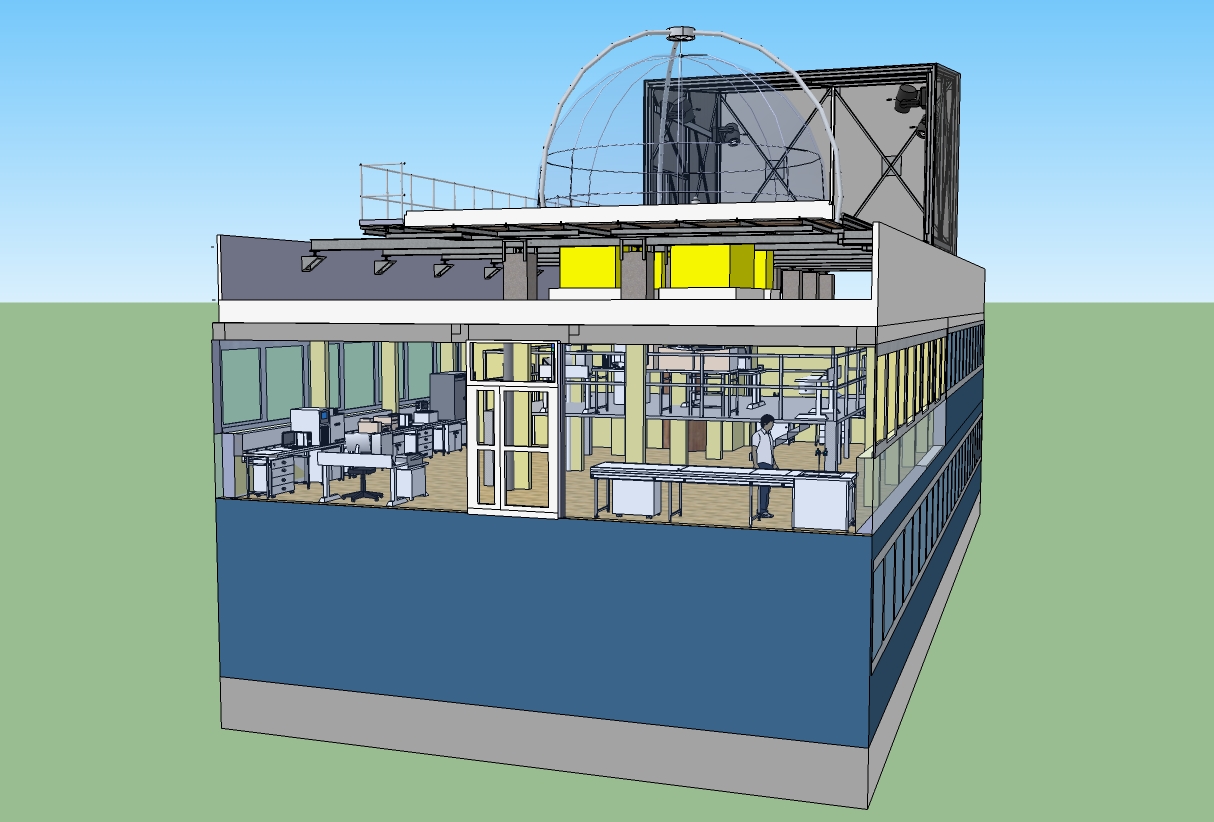 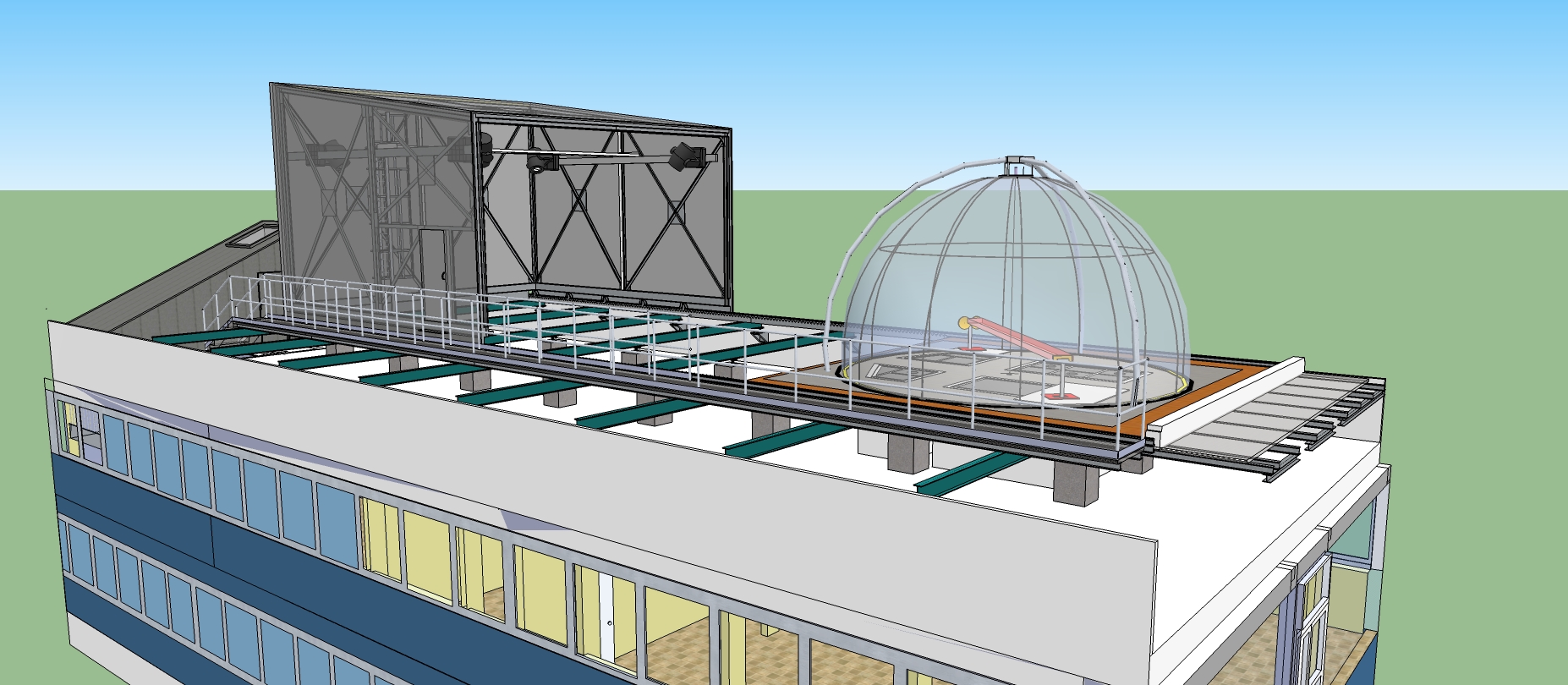 |
| Irradiation spectra | Natural irradiation: solar irradiation Artificial irradiation: ongoing |
| Size dependent aerosol loss/lifetime | To be defined |
| Auxiliary mechanism | • Rate for dilution of trace gases is obtained from the decay of SF6 • Wall loss of O3, NOx, HCHO and VOCs are obtained from reference experiments under dark, (they depend on the wall condition), typically rates < 2x10-6s-1. • Parameterization of sources for HONO, HCHO, CO, NO2 using measured temperature, solar radiation, relative humidity. • Photolysis frequencies calculated from actinic flux measured inside the chamber. 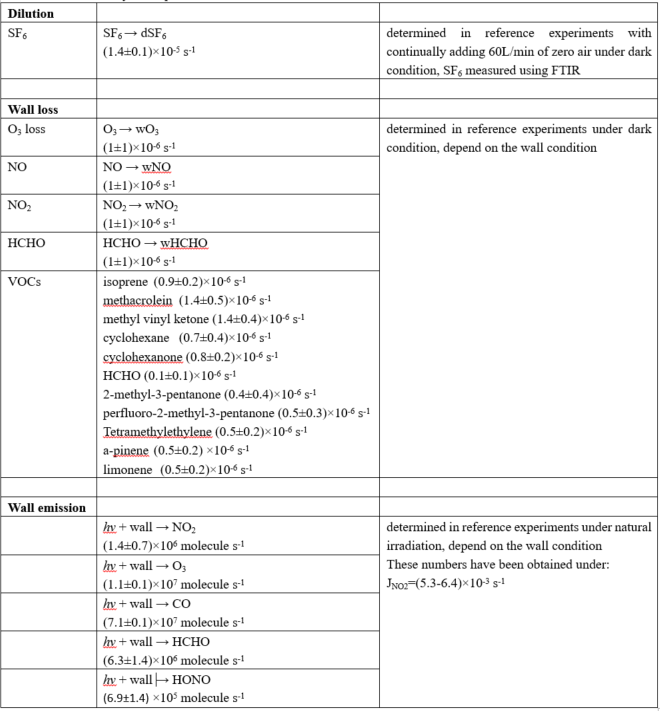 |
| List of instruments | - FTIR (up to 500 m path length, Bruker Vertex 70) - PTR-ToF-MS (Ionicon 8000) -Aerodyne ToF-CIMS - CIMS (OH radical/CIs/H2SO4) - CRDS (NO3 & N2O5) - AIM 9000D - GC-FID-MS (Chromatotec) - ATD-GC-MS (PerkinElmer Clarus 600 C) - UHPLC-MS (Shimadzu LCMS-2020) - IC (Metrohm 882) - SMPS-CPC (TSI Nano/Long DMA) - LOPAP (for HONO, Quma) - Aerolaser 4021 (for HCHO) - SPIRIT (CO, NO2, CH4 and N2O) - Spectroradiometer - Aerodyne NO2 CAPS - Monitors (O3, NO, NOx (NO + NO2), SO2) |
| Description paper |
Y. Ren, B. Grosselin, V. Daele, A. Mellouki Investigation of the reaction of ozone with isoprene, methacrolein and methyl vinyl ketone using the HELIOS chamber, Faraday Discussions, Faraday Discuss., 2017, 200, 289, DOI: 10.1039/c7fd00014f Y. Ren, PhD Thesis, University pf Orleans, May 2017 (http://www.icare.cnrs-orleans.fr/IMG/theses/2017-Ren-th.pdf) |



